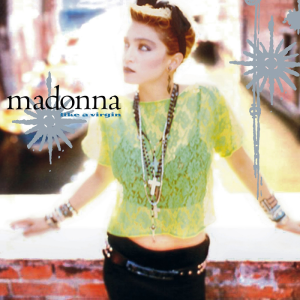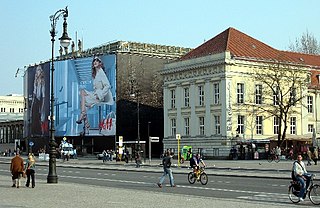
Flappers were a subculture of young Western women in the 1920s who wore short skirts, bobbed their hair, listened to jazz, and flaunted their disdain for what was then considered acceptable behavior. Flappers were seen as brash for wearing excessive makeup, drinking alcohol, smoking cigarettes in public, driving automobiles, treating sex in a casual manner, and otherwise flouting social and sexual norms. As automobiles became more available, flappers gained freedom of movement and privacy.

Kogal is a Japanese fashion culture that involves girls wearing an outfit based on Japanese school uniforms. The girls may also wear loose socks and scarves, and have dyed hair. The word kogal is anglicized from kogyaru, a contraction of kōkōsei gyaru.

A polo neck, roll-neck, turtleneck, or skivvy is a garment—usually a sweater—with a close-fitting collar that folds over and covers the neck. It can also refer to the type of neckline, the style of collar itself, or be used as an adjective.

"Material Girl" is a song recorded by American singer Madonna for her second studio album, Like a Virgin (1984). It was released on January 23, 1985, by the Sire label as the second single from Like a Virgin. It also appears slightly remixed on the 1990 greatest hits compilation, The Immaculate Collection, in its original form on the 2009 greatest hits compilation, Celebration and Finally Enough Love: 50 Number Ones (2022). The song was written by Peter Brown and Robert Rans, while Nile Rodgers produced the track. Madonna explained that the concept of the song was indicative of her life at that time, and she liked it because she felt it was provocative.

"Like a Virgin" is a song recorded by American singer Madonna from her second album of the same name. The song was written and composed by Tom Kelly and Billy Steinberg, and it was released as the album's lead single on October 31, 1984. A dance song with two hooks, Madonna sings in a high register while a continuous arrangement of synths are heard along the bassline. The song's lyrics are ambiguous, consisting of hidden innuendos and open to various interpretations.

The Virgin Tour was the debut concert tour by American singer-songwriter Madonna. The tour supported her first two studio albums, Madonna (1983) and Like a Virgin (1984). Although initially planned for an international audience, the tour was restricted to the United States and Canada. Warner Bros. Records decided to send Madonna on tour after Like a Virgin became a success. After an official announcement on March 15, 1985, Madonna and her team began production plans. She wanted the tour to be a reflection of her own self and collaborated with designer Maripol for the costumes.

In fashion, the midriff is the human abdomen. The midriff is exposed when wearing a crop top or some forms of swimwear or underwear.

Fashion of the 1980s was characterized by a rejection of 1970s fashion. Punk fashion began as a reaction against both the hippie movement of the past decades and the materialist values of the current decade. The first half of the decade was relatively tame in comparison to the second half, which was when apparel became very bright and vivid in appearance.

Whale tail is the Y-shaped rear portion of a thong or G-string when visible above the waistline of low-rise pants, shorts, or skirts that resembles a whale's tail. Popularized by a number of female celebrities including Amy Dumas, Christina Aguilera, Victoria Beckham, Mariah Carey, Paris Hilton and Britney Spears, displaying whale tails became popular in the early 2000s, together with the popularity of low-rise jeans and thong panties; but quickly waned within the decade.
Maripol is an artist, film producer, fashion designer and stylist. She has had an influence on the looks of influential artists such as Madonna and Grace Jones. As part of the 1980s New York downtown scene, she captured the likes of Jean-Michel Basquiat, Keith Haring, Andy Warhol, and Debbie Harry with her Polaroid camera. Maripol also produced films, most notably Downtown 81.

Fashion of the 1960s featured a number of diverse trends, as part of a decade that broke many fashion traditions, adopted new cultures, and launched a new age of social movements. Around the middle of the decade, fashions arising from small pockets of young people in a few urban centers received large amounts of media publicity, and began to heavily influence both the haute couture of elite designers and the mass-market manufacturers. Examples include the mini skirt, culottes, go-go boots, and more experimental fashions, less often seen on the street, such as curved PVC dresses and other PVC clothes.

Madonna studies is the study of the work and life of American singer-songwriter Madonna using an interdisciplinary approach incorporating cultural studies and media studies. In a general sense, it could refer to any academic studies devoted to her. After Madonna's debut in 1983, the discipline did not take long to start up and the field appeared in the mid-1980s, achieving its peak in the next decade. Educator David Buckingham deemed her presence in academic circles as "a meteoric rise to academic canonisation". The rhetoric academic view of that time, majority in the sense of postmodernism, generally considered her as "the most significant artist of the late twentieth century", thus she was understood variously and as a vehicle to open up issues. In the 21st century, academic studies about Madonna have remained and continued in many aspects. At the height of its developments, authors of these academic writings were sometimes called "Madonna scholars" or "Madonnologists", and both E. Ann Kaplan and John Fiske were classified as precursors.

Street style is fashion that is considered to have emerged not from studios, but from the grassroots. Street fashion is generally associated with youth culture, and is most often seen in major urban centers. Magazines and newspapers commonly feature candid photographs of individuals wearing urban, stylish clothing. Mainstream fashion often appropriates street fashion trends as influences. Most major youth subcultures have had an associated street fashion. Street style is different all around the globe.

Anti-fashion is an umbrella term for various styles of dress which are explicitly contrary to the fashion of the day. Anti-fashion styles may represent an attitude of indifference or may arise from political or practical goals which make fashion a secondary priority. The term is sometimes even used for styles championed by high-profile designers, when they encourage or create trends that do not follow the mainstream fashion of the time.

American entertainer Madonna has produced five fashion brands, beginning with a clothing range for fashion store H&M in March 2007. She later created an enterprise, MG Icon LLC, a joint venture with her manager Guy Oseary and Iconix Brand Group which produces her lifestyle brands Material Girl and Truth or Dare by Madonna. She also collaborated with Dolce & Gabbana on a range of sunglasses which marked the first co-branded collaboration that the design duo has ever undertaken.

American singer-songwriter Madonna has had a social-cultural impact on the world through her recordings, attitude, clothing and lifestyle since her early career in the 1980s. Madonna has built a legacy that goes beyond music and has been studied by sociologists, historians and other social scientists. This contributed to the rise of the Madonna studies, an academic and critical response dedicated to her work and persona for which Madonna's semiotic and image was diversified in a wide-ranging of theoretical stripe from feminism to queer studies among others.
Breathless Mahoney is a fictional character in the American comic strip Dick Tracy, created by Chester Gould. She first appeared in the strip on May 11, 1945, and was apparently killed on August 26, 1946.

A Madonna impersonator is an entertainer who impersonates American singer-songwriter Madonna. Professional or dedicated Madonna impersonators have existed since at least the mid-1980s, and were sometimes sorted as "tribute acts". As an established artist, Madonna impersonators have seen a notable demand, many of them performing in front of thousands people and visiting several countries in their professional Madonna career as some media outlets have reported. Notable Madonna impersonators include Denise Bella Vlasis and Venus D-Lite. Others impressionists have included Madonna in their repertoire, such as Tracey Bell, Charlie Hides and Véronic DiCaire.

American singer-songwriter Madonna has been considered a fashion and style icon by fashion journalism and other sectors. Fashion critics, designers and scholars have examined her influence in fashion from different stages, shaping views on her public image and cultural significance. Her connection with the community was once labeled a symbiotic relationship, while her industry ventures include owning fashion brands and appearing at events such as the Met Gala.

American singer-songwriter Madonna has been considered a sexual icon and defined by an author, as the leading sex symbol of the postmodern era. Many have considered Madonna's sexuality as one of the focal points of her career. The Oxford Dictionary of English (2010) even credited her image as a sex symbol as a source of her international stardom. Her sexual displays have drawn numerous analysis by scholars, sexologists, feminists, and other authors. Due to her constant usage of explicit sexual content, Madonna faced censorship by MTV for her videos, as well as by other entities for her stage performances, and other projects in her early career.




















